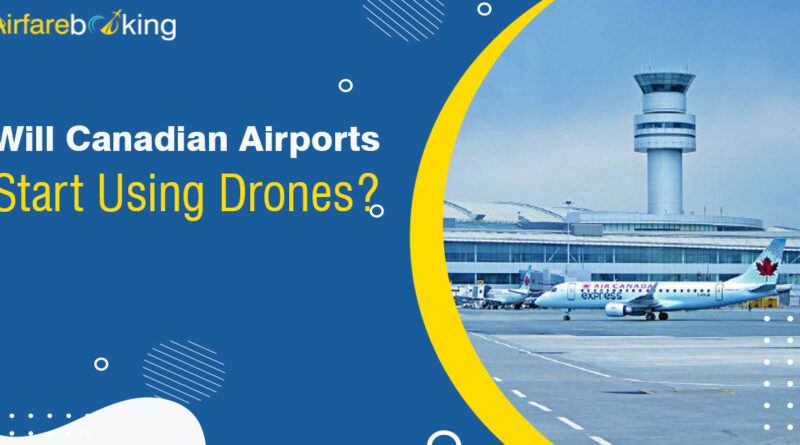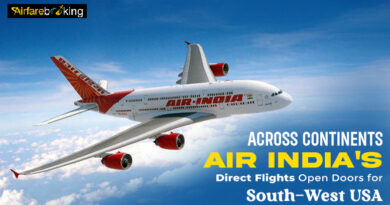Will Canadian Airports be Using Drones?
Drones or Unmanned Aerial Vehicles (UAV) are generally received negatively. Despite being an ingenious technological device, they are always in the headlines mostly because of notorious reasons.
However, drones have the potential to make lives better. Recently, one of the Canadian Airports deployed a highly-sophisticated UAV to assess the potential use of the device in airport operations.
The focus of the project was to collect information pertaining to runway safety inspections. The pioneering step may be the next big thing in the aviation industry.
That leaves you with one important question. How long before Canadian Airports start using Drones to enhance operations?
So, let’s dive deeper into the matter:
Edmonton International Airport (EIA) and Microdrone md4-1000
EIA used the Microdrone md4-1000 to gather Lidar and runway images. The reason behind this data collection was to accurately predict when preventive maintenance should be carried out.
-
Using drones will improve safety
Facilities such as runways, aircraft handling aprons and taxiways contribute towards safe and smooth operations.
You can imagine the threats of a faulty runway! You don’t expect such blunders when you book flight tickets.
Therefore, correctly projecting the time of preventive maintenance becomes all the more necessary.
-
Federal Regulators
One of the biggest concerns about using drones is anonymity. However, Edmonton International Airport performed all the drone operations in partnership with Transport Canada, UAS and NAV Canada.
-
CAR permits unmanned aircraft use
CAR or Canadian Aviation Regulations allow the use of UAVs. However, the same must be performed under visual-line-of-sight and within an aerodrome environment.
Moreover, to fly drones, pilots need training and advanced certificate. This requires the pilot to undergo a written test. Next, an approved flight reviewer shall review the test before bestowing certification.
Potential Benefits of Drone Technology to the Airports
Now, let’s look at how airports can use drone technology.
-
Airport Inspections
As mentioned above in the case of EIA testing microdrone, airport inspections are one of the best use for a drone.
This is not only going to make the activity, smooth and quick but will also cut costs. Hello, cheap airline tickets!
Another instance includes inspecting PAPI (Precision Approach Path Indicator) units. Drones can check whether these units are in accordance with the approved transition angles, and so on.
-
Engineering and Planning
It is possible to create 3D maps of airport properties using drone technology with the airport’s Geographic Information System. HD images will help airport authorities to determine and document pavement discrepancies.
This information is extremely useful to create repair and replacement programs. Also, there is no better proof than a high definition image to avail of grant funding.
Drones can provide land survey information during construction projects. It will also be easier to oversee the progress of construction. Engineers may use data to identify key problem areas.
-
Emergency Situations
Drones have saved countless lives in the past. It is used as an effective tool during emergency situations by police, fire departments, etc.
Drones can also prove beneficial during airport emergencies such as an airplane crash. Situational awareness can avert the potential danger in time. This becomes easy with drones, as you get access to real-time data.
Police helicopters or other traditional aerial viewing means, need time to reach the scene of an emergency.
-
Bird Control
Sometime bird strikes with an airplane can prove fatal. Most of such accidents take place during landings and takeoffs.
Currently airports use technology such as RoBird. It is basically a robotic falcon that is used to scare birds. However the problem with this is that sometimes it results in attracting huge flocks.
-
Marketing
Picture this, you have an amazing looking airport property, and want to expand your business what do you do? Yes! You take high-definition drone images of the airport and market your product.
Aerial photos and videos are significantly easy and inexpensive is you use a drone. Moreover, if an airport has available land, it can capture images and market it to develop the commercial value of the area.
Many passengers make flight bookings to experience the airport property, and marketing it through aerial images is a great idea.
-
Training
Further, airports can also use drone technology to train employees and pilots. An airport gives a wide variety of training to its employees.
This includes airport police training, airport driver training, TSA training, and so on.
-
Drone Deliveries
e-Commerce is one of the most popular industries across the world. Drones have the ability to make cargo deliveries faster.
Edmonton International Airport has come up with the world’s first drone delivery.
EIA has made this possible with the help of Air Canada and Drone Delivery Canada (DDC). Such technology will solve problems like cargo deliveries to remote areas.
Moreover, approved routes are being developed to make the delivery quick and convenient.
How does the future look like?
NAV Canada has recently made an agreement with a technological partner, Unifly. There are working on a system that shall offer Canadian drone pilots access to the web and mobile applications and use it for a number of benefits.
These benefits include determining safe and legal airspace, planning flights, managinf operations, and a fleet of drones.
Futuristic steps such as that of Canada’s Edmonton International Airport is taking airports one step closer to the adoption of drone technology. Canada is at the forefront when it comes to using Unmanned Aerial Vehicles.
After setting up the first international hub for drone cargo deliveries, the future looks promising. Still there are many aspects that are yet to benefit from UAVs.
Some of these are perimeter security, foreign object detection, building, and runway integrity surveys.
However, even these just scrap the surface. The potential uses of drone are virtually endless.
Moreover, International Air Travel Association (IATA) forecasts drone technology as a key-changer of the future of the aviation industry.
It is only a matter of time when we will see drones working closely with airports to make passenger and flight travel experience safer and convenient. Let’s see what the future has in store. Till then, keep flying!



